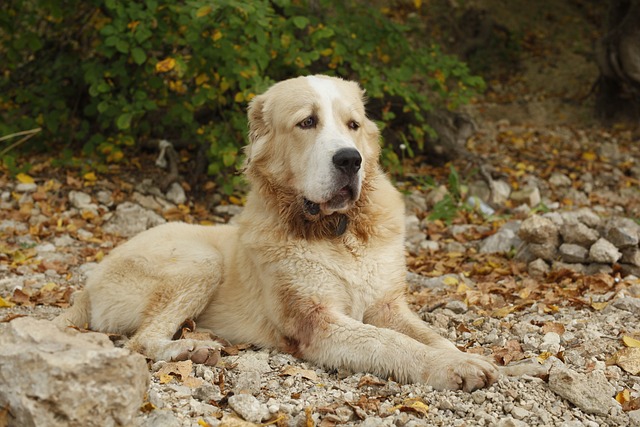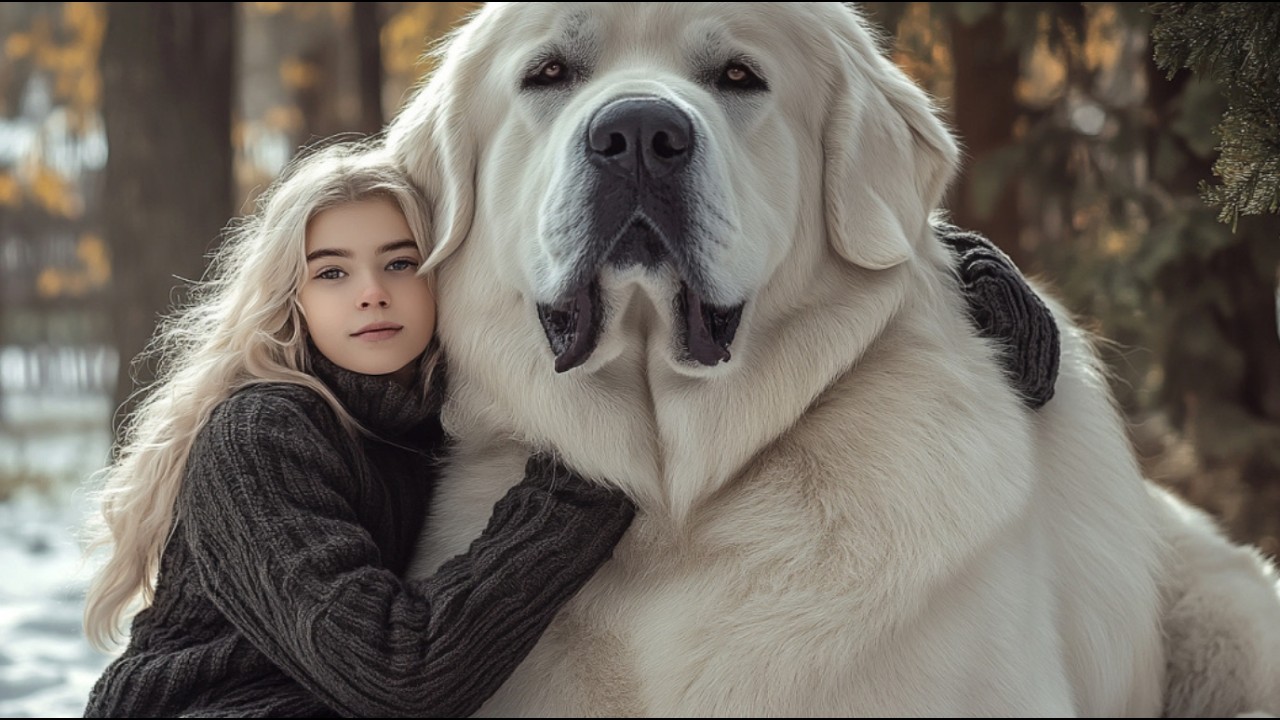
The Origins of the Alabai
History of the Alabai breed
The Alabai, also known as the Central Asian Shepherd Dog, boasts a rich history steeped in tradition and functionality. This breed has its roots in the vast steppes of Central Asia, where it served as a livestock guardian for centuries. Historically, Alabai dogs were essential for the protection of sheep and goat herds against predators such as wolves and bears. Their impressive strength, loyalty, and instinctive guarding abilities made them treasured companions for herders.
During the late 20th century, the recognition of the Alabai breed solidified when the State Agroindustrial Committee of Turkmenistan established standardized traits for the Central Asian Shepherd Dog. This formal acknowledgment aimed to preserve its unique characteristics and ensure future generations would appreciate and respect the breed’s historical significance.
Geographic roots and cultural significance
The geographic roots of the Alabai stretch across the expansive regions of Turkmenistan, Kazakhstan, Uzbekistan, and Afghanistan. They embody the spirit of the nomadic lifestyle of the Central Asian people. In Turkmenistan, the Alabai is not just a dog; it is a national symbol reflecting strength and endurance. This cultural importance is exemplified by the installation of the Alabai Monument in Ashgabat, dedicated to celebrating the breed’s legacy.
Key Cultural Highlights:
- Symbol of Pride: The Alabai is revered in Turkmen culture, representing resilience and loyalty.
- Tradition of Guardianship: These dogs have historically provided security for families and livestock, bridging the gap between humanes and nature.
- Monumental Tribute: In 2020, a monumental statue was unveiled to honor the breed’s vital role in society, a testament to its enduring legacy.
This blend of historical significance and deep-rooted cultural importance makes the Alabai a fascinating subject for dog enthusiasts and history lovers alike.
Physical Characteristics
Size and weight
The Alabai, or Central Asian Shepherd Dog, is an impressive breed known for its imposing stature and robust physique. Males typically stand between 28 to 32 inches tall, while females range from 26 to 30 inches. Their weight can vary significantly, with males weighing between 110 to 176 pounds and females ranging from 88 to 143 pounds.
- Height:
- Males: 28-32 inches (70-80 cm)
- Females: 26-30 inches (65-75 cm)
- Weight:
- Males: 110-176 lbs (50-800 kg)
- Females: 88-143 lbs (40-65 kg)
This breed’s powerful build is complemented by a broad chest and muscular shoulders, indicating their strength and capability as working dogs.
Coat colors and textures
Alabai dogs have coarse coats that can be either short or long, often adorned with a dense undercoat that provides insulation against harsh environments. The most common coat colors include:
- White
- Black
- Brown
- Sable
- Brindle
Many dogs may display a combination of these colors, making each Alabai unique. Their fur can become quite thick, requiring occasional grooming, especially during shedding seasons.
Unique features and traits
One of the standout features of the Alabai is its broad head, jowly face, and distinctive dewlap, which adds to its commanding presence. These dogs possess strong jaws and broad, deep-set eyes that can range in color from hazel to dark brown.
- Notable Features:
- Dewlap: A defining characteristic aiding in temperature regulation.
- Muscular Build: Indicative of their history as guardians and protectors.
- Eagerness to Patrol: Their territorial instincts shine through in their behavior.
With their blend of size, strength, and unique features, Alabai dogs hold a special place as both companions and working dogs, reflecting their rich heritage and functionality. Their loyal demeanor and protective instincts make them exceptional guardians, truly embodying the essence of the breed.

Temperament and Behavior
Loyalty and protective instincts
The Alabai, known for its incredible loyalty, serves as a fierce protector of its family and territory. This breed has a deep-rooted history as a livestock guardian, which contributes to its natural instinct to protect. Alabai dogs exhibit a courageous demeanor, standing firm when they perceive a threat. Many owners report that these dogs will bark firmly to alert their families of any unusual activity or intruders, showcasing their guardian nature.
- Characteristics of Loyalty:
- Fierce protectiveness over family and property
- Alertness to changes in the environment
- Bonding strongly with family members
For instance, one Alabai owner described how their dog would stand watch at the front of their property, ensuring no uninvited guests approached without alerting them. This keen sense of responsibility makes the Alabai not just a pet, but a steadfast guardian.
Interaction with family members
Alabai dogs thrive on companionship and are known to form deep connections with their families. They often exhibit a gentle giant persona, showing affection especially towards children. While they may seem aloof with strangers, they are warm and loving with those they trust.
- Interaction Traits:
- Friendly and playful with family
- Gentle, but can accidentally overwhelm small children due to their size
- Respectful of elder family members
One family shared their experience of how their Alabai would instinctively check on their toddlers, making sure they were safe while they played in the yard. This protective yet loving behavior illustrates the breed’s unique blend of instincts.
Training and socialization
Training an Alabai requires patience and understanding, given their independent nature. While they are intelligent and capable of learning, they thrive better with owners who employ positive reinforcement techniques. Early socialization is vital in shaping their behavior, especially in interacting with other pets and strangers.
- Training Tips:
- Start training at a young age to build strong foundations
- Use rewards that motivate the dog, such as treats or praise
- Engage them in socialization with various people and animals to reduce territorial instincts
A trainer observed that with consistent guidance and exposure, an Alabai could transition from a natural guardian to a well-mannered home companion. It’s essential for owners to establish boundaries early, allowing Alabai dogs to bloom into balanced, sociable family members.
With proper training and nurturing, your Alabai can remain a devoted family protector while also enjoying the simple joys of companionship.

Health and Care
Common health issues
Alabai dogs, or Central Asian Shepherds, are generally known for their robust health thanks to their natural development over centuries. However, like any breed, they can be prone to certain health issues.
- Common Health Concerns:
- Hip Dysplasia:A genetic condition where the hip joint doesn’t properly fit into the hip socket, leading to pain and mobility issues.
- Symptoms: Limping, reluctance to jump, or shifts in weight.
- Elbow Dysplasia: Another joint condition that may arise in large breeds, affecting movement.
- Dystrophic Epidermolysis Bullosa: A rare skin disorder that can cause severe skin lesions, usually present at birth.
- Ear Infections: Their floppy ears can trap moisture, leading to infections if not managed properly.
- Hip Dysplasia:A genetic condition where the hip joint doesn’t properly fit into the hip socket, leading to pain and mobility issues.
Regular veterinary check-ups are essential. Monitoring for early signs of these conditions can lead to better management and treatment, ensuring your Alabai remains healthy and active.
Diet and exercise needs
Feeding your Alabai a well-balanced diet tailored to their size and energy needs is crucial for their overall health. These dogs typically do well on high-quality commercial dog food that meets AAFCO standards, but many owners also opt for raw diets that require careful balancing to avoid deficiencies.
- Diet Tips:
- Two meals a day (morning and evening) are generally recommended.
- Monitor calorie intake to prevent obesity.
- Treats should make up no more than 10% of their daily caloric intake.
Exercise is equally important. Alabai dogs have a medium energy level and require daily exercise to remain healthy. Regular walks and playtime in a secure area can satiate their need for physical activity while preventing boredom-driven destructive behaviors.
Grooming tips and maintenance
Grooming an Alabai is relatively straightforward, though their thick double coat requires attention, especially during shedding seasons. Here are some grooming tips to keep your dog looking and feeling great:
- Grooming Essentials:
- Brush 1-2 times a week normally, increasing to daily during shedding periods (typically in spring and fall).
- Bathe every 6-8 weeks or as needed to maintain cleanliness without stripping natural oils.
- Regularly check and clean the ears to prevent infections.
- Trim nails and brush teeth regularly to promote overall health.
By providing diligent care, a balanced diet, and regular exercise, you ensure your Alabai remains a healthy and happy member of your family, ready to guard and cherish.

Alabai as Working Dogs
Traditional roles in Central Asia
The Alabai, also known as the Central Asian Shepherd Dog, has played a crucial role in the lives of nomadic herders across Central Asia for centuries. Historically, these magnificent dogs were bred primarily as livestock guardians. Their primary role involved protecting flocks of sheep from formidable predators like wolves and bears, a task that required not just strength but also courage and intelligence.
- Key Traditional Roles:
- Livestock Guardian: The Alabai’s primary function was to safeguard sheep and goats from predators, showcasing incredible bravery.
- Herding: Apart from guarding, they were also used to help manage and guide livestock across vast terrains.
- Companionship: Alabais developed strong bonds with their human partners, becoming an integral part of the family unit, often seen by their side as loyal companions.
One farm owner shared how their Alabai would routinely patrol the property, remaining ever vigilant against potential threats while ensuring the safety of both livestock and family. This fierce loyalty exemplifies the breed’s historic significance in shepherding communities.
Adaptability to modern tasks
While the Alabai’s roots are steeped in traditional work, they have adapted remarkably well to modern tasks. Today, these dogs are not just confined to farms but are also increasingly seen in various roles that utilize their skills and traits.
- Modern Adaptations:
- Personal Protection: Alabais are often trained as personal guard dogs, thanks to their natural protective instincts and training flexibility.
- Search and Rescue: Their keen sense of smell and endurance make them suitable for search-and-rescue operations, especially in rugged terrains.
- Service Dogs: Although more common breeds dominate this field, Alabais are beginning to be recognized in areas requiring therapy and assistance.
As one trainer noted, the intelligence and independence of the Alabai allow them to excel in training settings, providing they receive proper guidance and socialization. With the right owner, these majestic dogs can flourish as versatile companions, fulfilling roles that align with their lineage while adapting to the needs of a modern world.
The Alabai certainly embodies a unique blend of tradition and modern versatility, making them an exceptional breed for those willing to embrace their rich heritage and noble characteristics.

Alabai in Society
Popularity worldwide
The Alabai, or Central Asian Shepherd Dog, is rapidly gaining recognition around the globe. Originally coveted for their livestock guardian capabilities in their homeland, these majestic dogs are now valued in various countries as loyal companions and vigilant protectors. Their popularity extends beyond Central Asia, as dog enthusiasts in Europe and the United States are increasingly drawn to the breed’s intelligence, strength, and protective instincts.
- Growing Global Appeal:
- Alabai puppies are becoming sought-after companions for those who understand the breed’s needs and traits.
- Special breed clubs and associations are forming to promote responsible breeding and ownership, enhancing their visibility in canine communities.
As awareness builds, the Alabai is positioned to become a more common sight in households that prioritize working breeds capable of both loyalty and protection.
Legal status and regulations
The Alabai’s classification and legal status can vary widely depending on the country. In some places, they are celebrated as a national symbol, particularly in Turkmenistan, where the breed is revered for its historical significance and role in safeguarding livestock.
- Regulatory Notes:
- In Central Asia, the Alabai is often recognized and regulated under specific breed standards.
- Conversely, certain countries may impose regulations or bans due to misconceptions about aggressive breeds.
Owners must be proactive in researching their locality’s regulations to ensure compliance and promote responsible ownership.
Cultural impact and representation
The Alabai holds a profound significance within Turkmen culture, symbolizing resilience, loyalty, and strength. This cultural connection was exemplified in 2020 when a 19-foot gilded statue of an Alabai was unveiled in Ashgabat, memorializing the breed and its steadfast bond with the Turkmen people.
- Cultural Highlights:
- The statue serves not only as an artistic tribute but also as a recognition of the dog’s importance in Turkmen identity.
- Plans are underway to nominate the breed for inclusion on UNESCO’s World Heritage list, further solidifying its cultural significance.
From songs celebrating their bravery to monuments honoring their legacy, the Alabai’s presence is woven deeply into the cultural fabric of Turkmenistan. As the breed gains traction globally, it carries the essence of Central Asian heritage, allowing a broader audience to appreciate the Alabai’s noble characteristics and storied past.

Leave a Reply